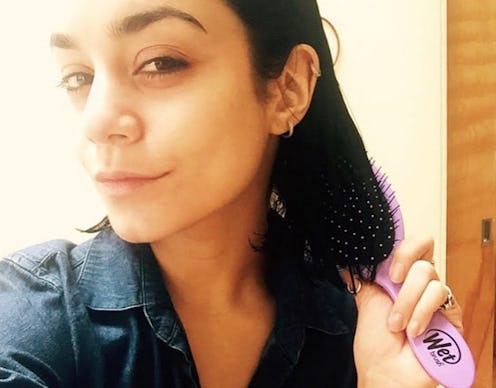Fashion
Is Brushing Through Wet Hair Really That Bad?

If you've been living by the never-brush-your-hair-when-it's-wet rule in order to avoid damaging your locks, you've been missing out — sort of. As it turns out, brushing your hair when it's wet can have positive effects as well. It all really depends on what kind of brush you're using, according to Refinery 29. If you vigorously brush through your wet hair in order to get out all the tangles, that's when the damage happens. But if you use a wide-tooth comb to carefully work through your wet hair from the roots to the ends, not only does it detangle your hair, but it also massages your scalp.
An important thing to keep in mind for healthy hair is to take good care of your scalp. Sure, your hair is important, but I guarantee there's a bunch of us out there that don't think twice about our scalps (I'm guilty!). Celebrity hairstylist, Riawna Capri, shares that massaging your scalp with a wooden-bristle brush can, "rejuvenate the hair follicle and get the blood flowing there." So does this mean we should have more than one type of brush? You bet. A wide-tooth comb works best for detangling, whereas a boar bristle brush creates scalp stimulation. Boar bristles also give your hair a natural shine by distributing your natural oils from your hair roots.
Oh, and if you have naturally curly hair and try to lessen the frizz with products, there's another way. According to celebrity stylist, Christine Symonds, "Naturally curly hair should be brushed while wet and then left alone to let the natural texture form."
And once your hair is completely dry, avoid brushing because it'll only add frizz. Symonds said, "The less you touch it or brush it, the less frizz will form." Noted.
Brush Strokes Oval Cushion Boar Bristle Brush, $7.49, sallybeauty.com
Breezelike No Static Wavy Handle Green Sandalwood Wide Tooth Comb, $14, amazon.com
Images: thewetbrush (2), Courtesy of Brands